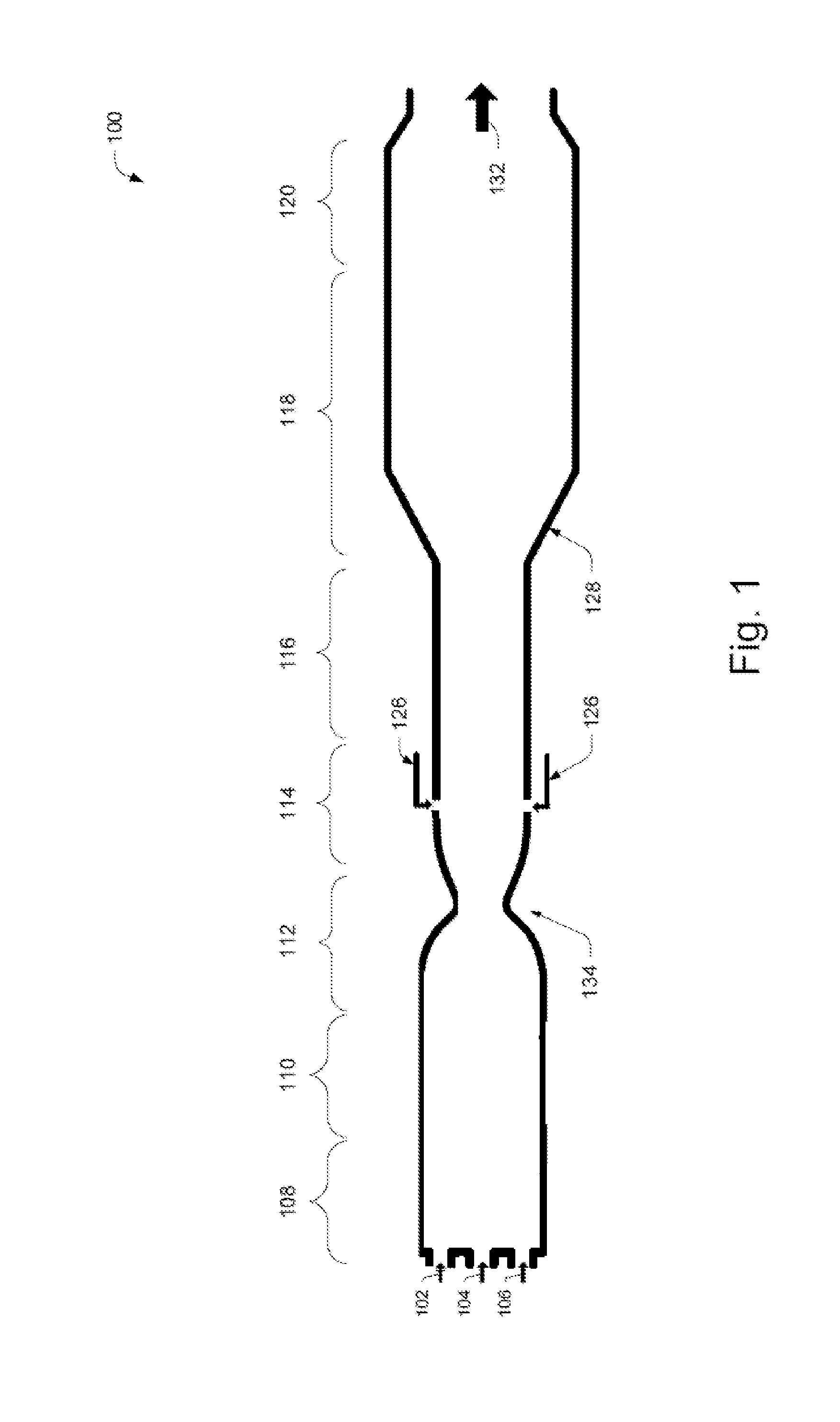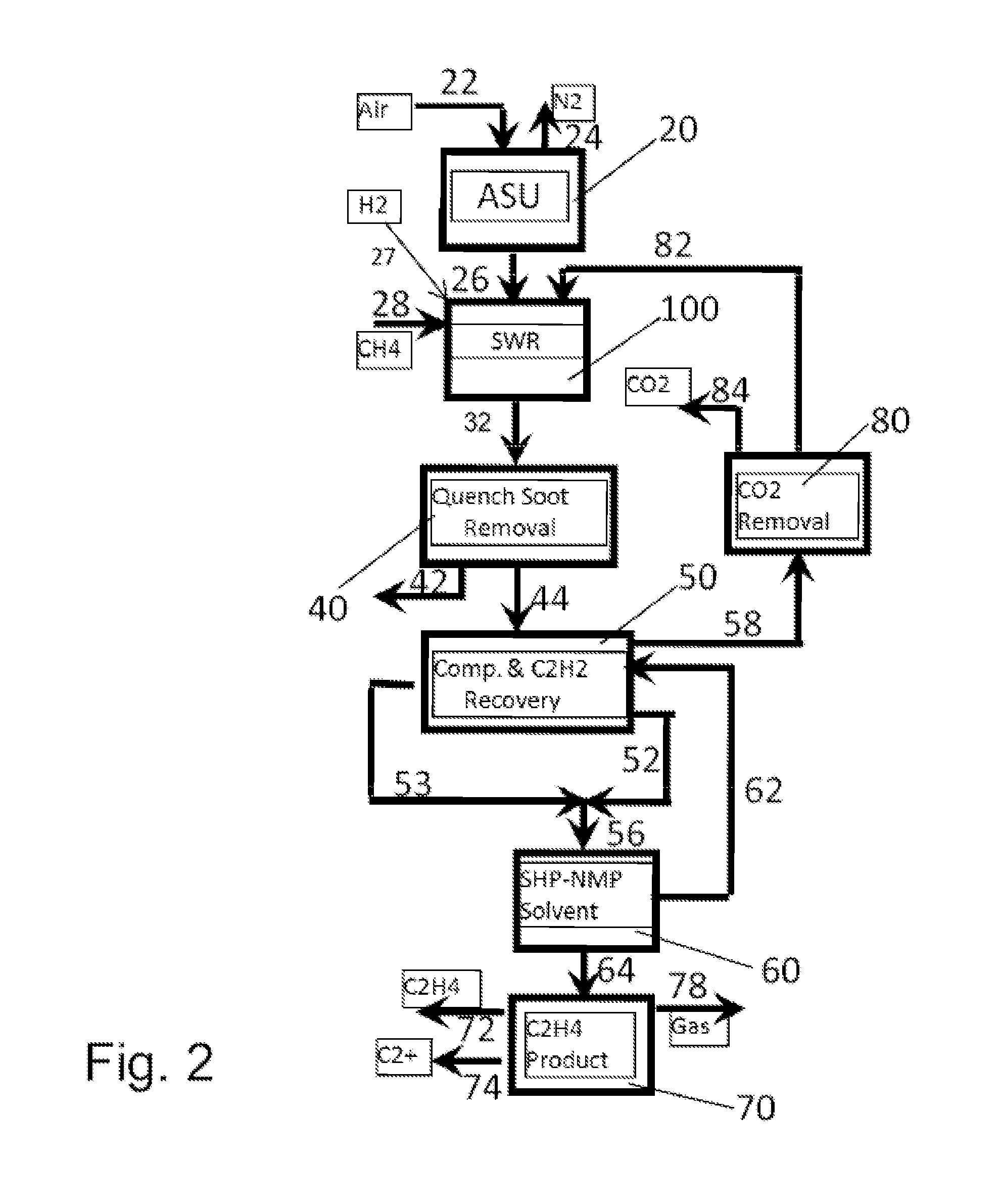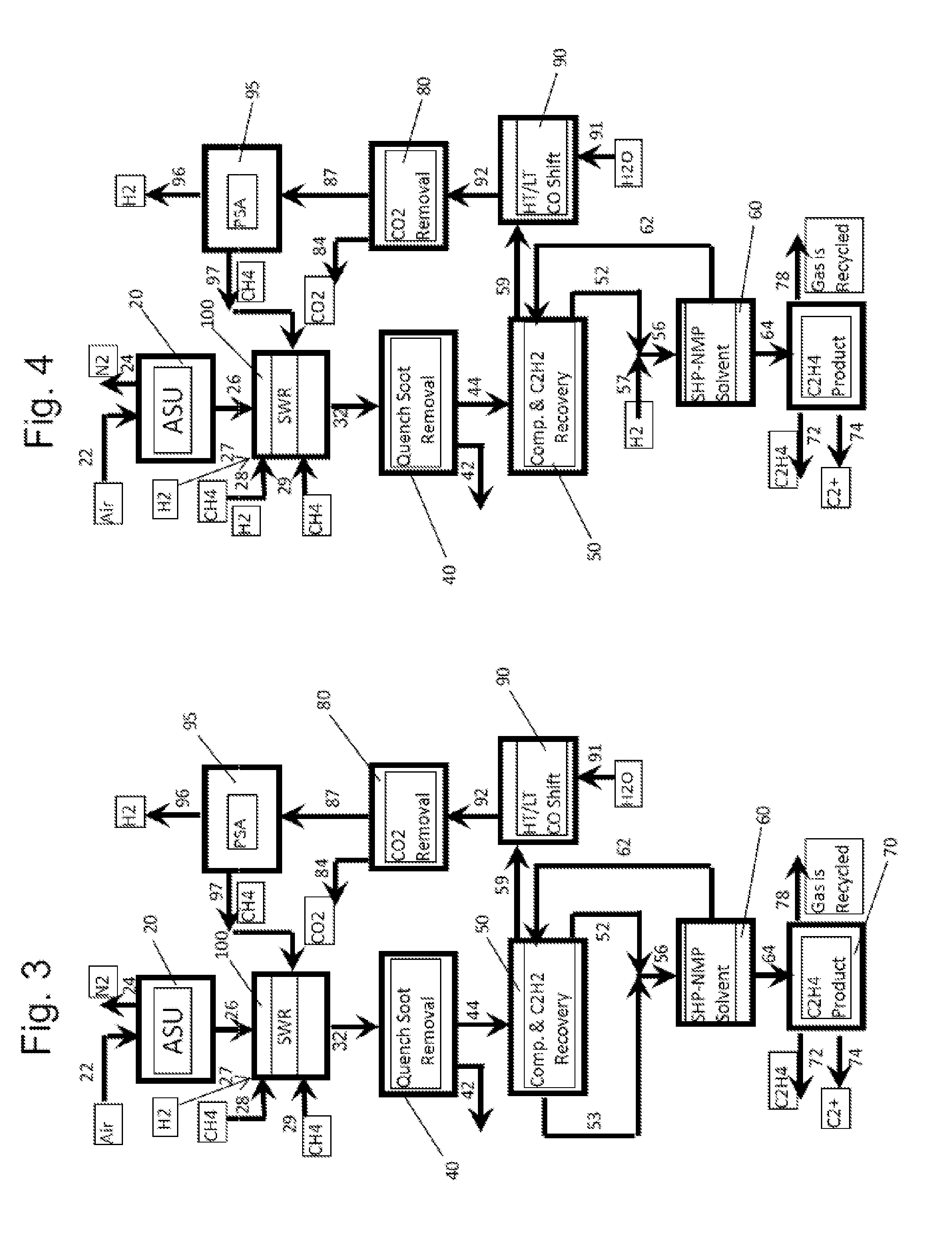High efficiency processes for olefins, alkynes, and hydrogen co-production from light hydrocarbons such as methane
a technology of light hydrocarbons and high efficiency, which is applied in the direction of hydrocarbon oil treatment products, combustion types, lighting and heating apparatuses, etc., can solve the problems of large amount of light hydrocarbons required for the process, low carbon efficiency, and limit the amount of methane that can be converted to acetylene, etc., to achieve more carbon efficiency, reduce the effect of acetylene production and environmental protection
- Summary
- Abstract
- Description
- Claims
- Application Information
AI Technical Summary
Benefits of technology
Problems solved by technology
Method used
Image
Examples
case 0
[0070 is prior art where methane is converted to acetylene in a partial oxidation reactor. The product gas containing acetylene and hydrogen is separated to produce a feed to a selective hydrogenation reactor that selectively hydrogenates acetylene with hydrogen to produce ethylene. The resulting ethylene can be separated from other products and the result is the yield given in Table 1. If part of the product CO in the fuel gas is burned in a later use (for example used as a fuel) that will result in increased carbon dioxide emissions.
case 1
[0071 needs much more methane to produce the same amount of ethylene compared to Cases 2-6. Case-6 has the lowest CO2 emission. The CO2 conversion zone in this configuration contains a solid acid catalyst that is capable of converting CO2 to CO in the presence of hydrogen and other hydrocarbons. The methanation section converts the CO into methane by utilizing the hydrogen in the gas. The gas product from this combined zone contains reduced CO2 and CO plus all hydrocarbons, including the methane that was produced from CO / CO2. The CO2 is removed first. The PSA separates the hydrogen and the hydrocarbon stream that also includes the remainder small amount of CO. The hydrocarbon stream is fed to the reactor's hydrocarbon feed section. For the combustor section, methane is used. In this configuration, Case-6 increases the carbon efficiency by 150% compared to its counterpart Case-3. Case-6 also has much less CO2 emissions compared to Case-3. Cases 2-6 produce high purity hydrogen as a b...
PUM
| Property | Measurement | Unit |
|---|---|---|
| temperature | aaaaa | aaaaa |
| temperature | aaaaa | aaaaa |
| residence time | aaaaa | aaaaa |
Abstract
Description
Claims
Application Information
 Login to View More
Login to View More - R&D
- Intellectual Property
- Life Sciences
- Materials
- Tech Scout
- Unparalleled Data Quality
- Higher Quality Content
- 60% Fewer Hallucinations
Browse by: Latest US Patents, China's latest patents, Technical Efficacy Thesaurus, Application Domain, Technology Topic, Popular Technical Reports.
© 2025 PatSnap. All rights reserved.Legal|Privacy policy|Modern Slavery Act Transparency Statement|Sitemap|About US| Contact US: help@patsnap.com



